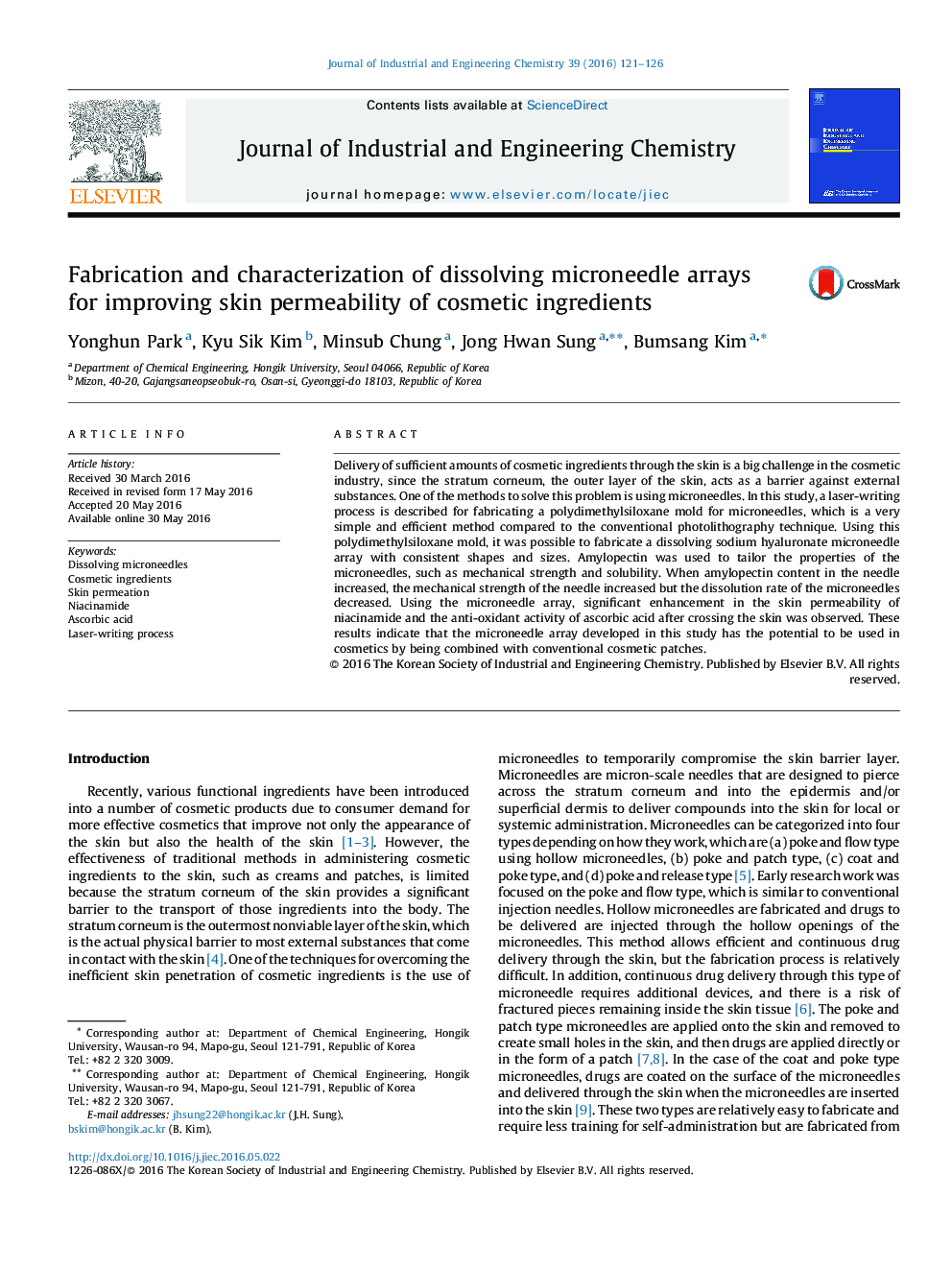| Article ID | Journal | Published Year | Pages | File Type |
|---|---|---|---|---|
| 226711 | Journal of Industrial and Engineering Chemistry | 2016 | 6 Pages |
Delivery of sufficient amounts of cosmetic ingredients through the skin is a big challenge in the cosmetic industry, since the stratum corneum, the outer layer of the skin, acts as a barrier against external substances. One of the methods to solve this problem is using microneedles. In this study, a laser-writing process is described for fabricating a polydimethylsiloxane mold for microneedles, which is a very simple and efficient method compared to the conventional photolithography technique. Using this polydimethylsiloxane mold, it was possible to fabricate a dissolving sodium hyaluronate microneedle array with consistent shapes and sizes. Amylopectin was used to tailor the properties of the microneedles, such as mechanical strength and solubility. When amylopectin content in the needle increased, the mechanical strength of the needle increased but the dissolution rate of the microneedles decreased. Using the microneedle array, significant enhancement in the skin permeability of niacinamide and the anti-oxidant activity of ascorbic acid after crossing the skin was observed. These results indicate that the microneedle array developed in this study has the potential to be used in cosmetics by being combined with conventional cosmetic patches.
Graphical abstractFigure optionsDownload full-size imageDownload as PowerPoint slide
